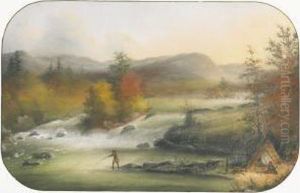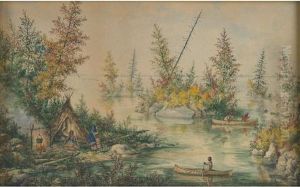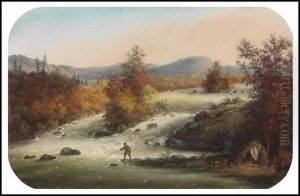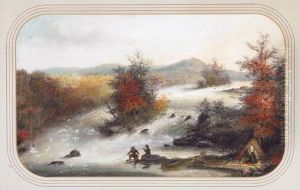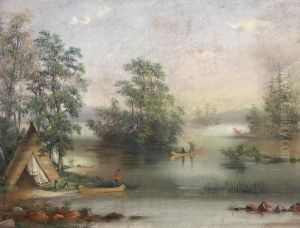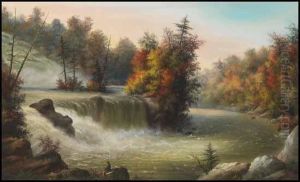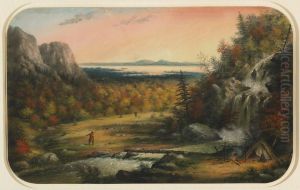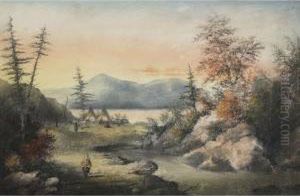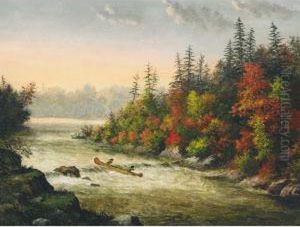Alfred Worsley Holdstock Paintings
Alfred Worsley Holdstock was a British painter known for his maritime scenes and landscape paintings. Born in 1836 in the United Kingdom, Holdstock embarked on his artistic journey at a relatively young age, demonstrating a keen interest in capturing the essence of the sea and its surrounding landscapes. Throughout his career, Holdstock developed a distinctive style that emphasized the dramatic interplay between light and shadow, which became a hallmark of his work.
Holdstock's artistic endeavors were largely influenced by the Romantic movement, which was characterized by its emphasis on emotion and individualism as well as glorification of the past and nature. He was particularly adept at rendering the tumultuous and serene moods of the sea, which resonated with the Romantic era's fascination with nature’s power and beauty. His works often depicted ships, coastal scenes, and the daily life of those living near the sea, offering a glimpse into the maritime culture of his time.
During his lifetime, Holdstock exhibited his works at various prestigious venues, including the Royal Academy of Arts in London, showcasing his ability to capture the changing moods of the sea and landscape with a remarkable level of detail and sensitivity. Despite the popularity of his maritime scenes, Holdstock also ventured into landscape painting, where he applied his keen observation of light and atmosphere to rural and pastoral settings.
The latter part of Holdstock's career saw him continuing to explore and refine his technique, with his works becoming more nuanced in their depiction of light and atmosphere. He remained active as an artist until his later years, leaving behind a legacy of works that continue to be appreciated for their technical skill and emotive depth.
Alfred Worsley Holdstock passed away in 1920, but his contributions to British maritime and landscape painting have ensured his place in the history of art. His paintings are now held in collections worldwide, serving as a testament to his enduring appeal and the timeless quality of his artistic vision.
